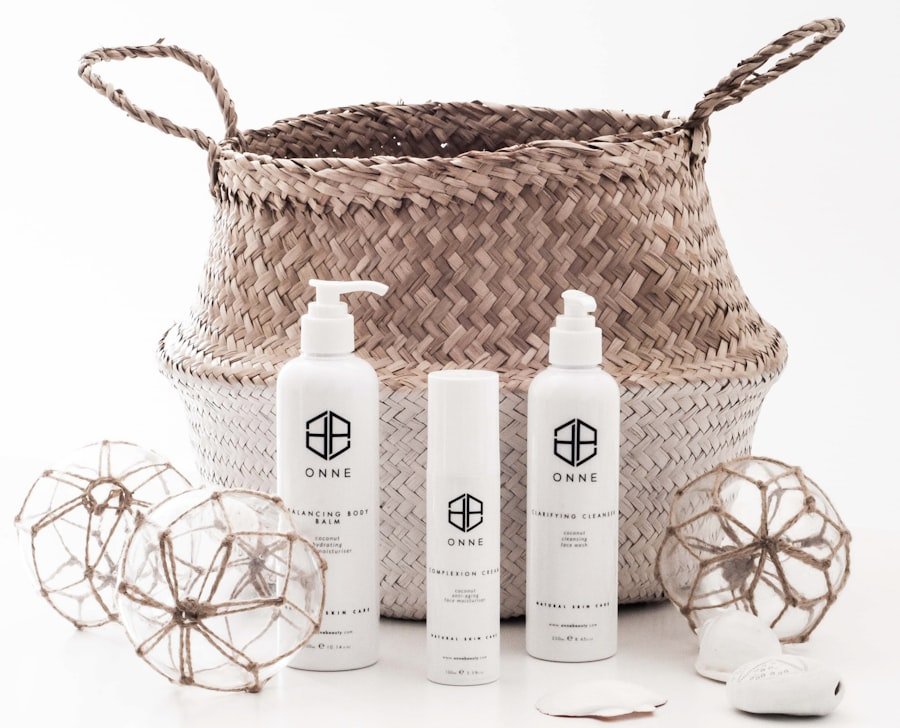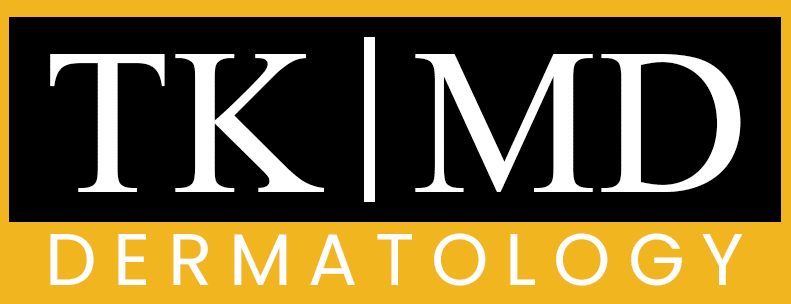When we think about scars, we often associate them with physical reminders of past injuries or surgeries. Scars form as part of the body’s natural healing process. When our skin is injured, whether through cuts, burns, or surgical procedures, our body responds by producing collagen to repair the damaged tissue.
This collagen forms a fibrous tissue that eventually becomes the scar we see.
The appearance of scars can vary significantly based on several factors, including the type of injury, the depth of the wound, and our individual healing processes. As we delve deeper into the science of scar formation, we realize that not all scars are created equal.
Some may be flat and barely noticeable, while others can be raised, discolored, or even painful. Factors such as genetics, age, and skin type play crucial roles in how our scars develop. For instance, younger individuals may experience more pronounced scarring due to their skin’s increased elasticity and healing capacity.
Understanding these nuances helps us appreciate the complexity of scar formation and sets the stage for exploring various treatment options available to us.
Key Takeaways
- Scars form as a natural part of the healing process and can vary in appearance and severity.
- Over-the-counter scar removal options include silicone-based gels and sheets, as well as vitamin E creams.
- Professional scar removal treatments such as laser therapy, chemical peels, microneedling, and dermabrasion can help reduce the appearance of scars.
- Natural remedies like aloe vera, honey, and coconut oil may also aid in scar reduction.
- Lifestyle changes such as maintaining a healthy diet, staying hydrated, and protecting scars from the sun can help manage and minimize the appearance of scars.
Over-the-Counter Scar Removal Options
How OTC Products Work
Many OTC products contain ingredients like silicone, which has been shown to help flatten and soften scars over time. Silicone sheets and gels create a protective barrier over the scar, allowing it to retain moisture and promoting a more favorable healing environment.
Additional Active Ingredients
quinone and Retinoids
Additionally, we might find creams and ointments that include active ingredients such as hydroquinone or retinoids. Hydroquinone works by lightening hyperpigmented areas, while retinoids can enhance cell turnover and improve skin texture.
Managing Expectations
While these products can be effective for some individuals, it’s essential for us to manage our expectations. Results can vary widely based on the type of scar and individual skin characteristics. Therefore, we should approach OTC options with patience and a willingness to experiment to find what works best for us.
Professional Scar Removal Treatments

For those of us seeking more significant results than what OTC products can offer, professional scar removal treatments may be the next logical step. Dermatologists and plastic surgeons provide a range of options tailored to our specific needs.
These treatments often involve more advanced techniques that can yield faster and more noticeable improvements in scar appearance.
One popular option is corticosteroid injections, which can help flatten raised scars like keloids or hypertrophic scars. By injecting steroids directly into the scar tissue, we can reduce inflammation and promote a smoother appearance. Another professional treatment we might consider is surgical revision, where a surgeon removes the scar tissue and closes the wound in a way that minimizes future scarring.
While these procedures can be more invasive than OTC options, they often provide us with the chance to achieve a more aesthetically pleasing result.
Laser Therapy for Scar Removal
Laser therapy has emerged as one of the most effective methods for scar removal in recent years. This technique utilizes focused light energy to target scar tissue without damaging surrounding skin. As we explore this option, we find that there are different types of lasers available, each designed for specific types of scars.
For instance, ablative lasers remove the outer layer of skin, promoting new skin growth underneath, while non-ablative lasers stimulate collagen production without removing any skin layers. The benefits of laser therapy extend beyond mere appearance; it can also improve texture and reduce discoloration associated with scars. Many of us appreciate that laser treatments are relatively quick and often require minimal downtime compared to surgical options.
However, it’s important for us to understand that multiple sessions may be necessary to achieve optimal results. Consulting with a qualified dermatologist will help us determine the best laser treatment plan tailored to our unique scar concerns.
Chemical Peels for Scar Reduction
Chemical peels represent another innovative approach to reducing the visibility of scars. This treatment involves applying a chemical solution to the skin, which causes the outer layer to exfoliate and eventually peel off. As we undergo this process, new skin emerges that is often smoother and less scarred than before.
Chemical peels can be particularly effective for superficial scars and those caused by acne. There are varying strengths of chemical peels available, ranging from mild to deep peels. Mild peels may require little to no downtime, while deeper peels can lead to significant peeling and redness that may take longer to heal.
As we consider this option, it’s crucial for us to consult with a skincare professional who can assess our skin type and recommend the appropriate peel strength for our specific needs. With proper care and follow-up treatments, chemical peels can significantly enhance our skin’s appearance over time.
Microneedling and Dermabrasion for Scar Removal

Microneedling and dermabrasion are two additional techniques that have gained popularity in recent years for their effectiveness in treating scars. Microneedling involves using a device equipped with fine needles to create tiny punctures in the skin’s surface. This process stimulates collagen production and encourages the skin to heal itself naturally.
As we undergo microneedling sessions, we may notice improvements in both texture and tone as our skin regenerates. On the other hand, dermabrasion is a more intensive procedure that involves exfoliating the outer layers of skin using a rotating brush or diamond wheel. This method is particularly effective for deeper scars and can result in smoother skin after recovery.
While both treatments can yield impressive results, they do require some downtime for healing. As we weigh our options, it’s essential for us to consider our pain tolerance and recovery time when deciding between microneedling and dermabrasion.
Natural Remedies for Scar Reduction
For those of us who prefer a more holistic approach to scar management, natural remedies offer an appealing alternative. Various ingredients found in nature have been touted for their potential to reduce scar visibility. For instance, aloe vera is known for its soothing properties and may help hydrate the skin while promoting healing.
Applying fresh aloe vera gel directly onto scars can provide relief and potentially improve their appearance over time. Another popular natural remedy is honey, which has antibacterial properties and can aid in wound healing. We might consider using raw honey as a topical treatment on our scars or incorporating it into our skincare routine.
Additionally, essential oils such as lavender or tea tree oil are often recommended for their healing properties. While these natural remedies may not provide instant results like some medical treatments, they can be gentle on our skin and worth exploring as part of our overall scar management strategy.
The Role of Silicone Sheets and Gels in Scar Treatment
Silicone sheets and gels have become staples in scar treatment due to their proven effectiveness in improving scar appearance. These products work by creating a protective barrier over the scar tissue, which helps retain moisture and regulate collagen production during the healing process. As we apply silicone sheets or gels consistently over time, we may notice that our scars become flatter and less noticeable.
One of the advantages of silicone products is their ease of use; they can be worn discreetly under clothing or applied at night while we sleep. Many individuals find them particularly beneficial for raised scars or those that are still maturing after an injury or surgery. As we explore this option, it’s essential for us to follow the manufacturer’s instructions regarding application duration and frequency to maximize their effectiveness.
Vitamin E and Other Topical Treatments for Scar Removal
Vitamin E has long been associated with skincare benefits, particularly in scar treatment. Many of us have heard about its potential to improve scar appearance when applied topically. While research on its effectiveness is mixed, some individuals report positive results from using vitamin E oil on their scars.
It’s believed that vitamin E may help moisturize the skin and promote healing. In addition to vitamin E, other topical treatments such as hyaluronic acid or peptides are gaining popularity for their ability to enhance skin texture and hydration. These ingredients work by promoting cell turnover and improving overall skin health.
As we consider incorporating these treatments into our routine, it’s important for us to choose high-quality products that suit our skin type and address our specific concerns regarding scarring.
Massage and Scar Tissue Breakdown
Massage therapy is another technique that can aid in scar management by breaking down dense scar tissue and improving blood circulation in the area. When we gently massage a scar with our fingers or use tools designed for this purpose, we can help soften the tissue and promote flexibility in the surrounding skin. Regular massage may also alleviate discomfort associated with tight or raised scars.
As we engage in this practice, consistency is key; incorporating massage into our daily routine can yield better results over time. We might consider using oils or creams during massage sessions to enhance hydration and facilitate smoother movements across the scar tissue. While massage alone may not completely eliminate scars, it can certainly complement other treatments we choose to pursue.
Lifestyle Changes for Scar Management
Finally, as we navigate our journey toward effective scar management, it’s essential for us to consider lifestyle changes that can support our overall skin health. Maintaining a balanced diet rich in vitamins and minerals plays a crucial role in promoting healing from within. Foods high in antioxidants—such as fruits, vegetables, nuts, and seeds—can help combat inflammation and support collagen production.
Additionally, staying hydrated is vital for maintaining skin elasticity and promoting optimal healing conditions. We should also prioritize sun protection; UV exposure can darken scars and hinder their healing process. Wearing sunscreen daily not only protects our existing scars but also prevents new ones from forming due to sun damage.
By adopting these lifestyle changes alongside targeted treatments, we empower ourselves on our journey toward healthier-looking skin. In conclusion, understanding scar formation is just the beginning of our journey toward effective scar management. With a variety of treatment options available—ranging from over-the-counter products to professional interventions—we have numerous avenues to explore based on our individual needs and preferences.
Whether we choose natural remedies or advanced medical treatments, what matters most is finding a solution that works best for us while embracing patience throughout the process.
If you are interested in exploring non-invasive treatments for various skin concerns, you may also want to read about proven strategies for non-invasive weight loss. This article discusses different methods for achieving weight loss without surgery or invasive procedures, which may be of interest to those looking for natural options for scar removal.
FAQs
What are the top treatments for scar removal?
Some of the top treatments for scar removal include laser therapy, surgical removal, dermabrasion, and steroid injections. These treatments are often performed by dermatologists or plastic surgeons and can help reduce the appearance of scars.
What are some natural options for scar removal?
Natural options for scar removal include using silicone gel or sheets, applying vitamin E oil, using aloe vera gel, and massaging the scar tissue. These natural remedies can help improve the appearance of scars over time.
Are there any over-the-counter products for scar removal?
Yes, there are over-the-counter products for scar removal, such as scar creams, gels, and silicone sheets. These products often contain ingredients like onion extract, vitamin E, and hyaluronic acid, which can help improve the appearance of scars.
Can scar removal treatments completely eliminate scars?
While scar removal treatments can help reduce the appearance of scars, it is unlikely that they can completely eliminate scars. However, these treatments can significantly improve the appearance of scars and make them less noticeable.
Are scar removal treatments covered by insurance?
In some cases, scar removal treatments may be covered by insurance if they are deemed medically necessary. However, this will depend on the specific insurance policy and the reason for seeking scar removal treatment. It’s best to check with your insurance provider for more information.


